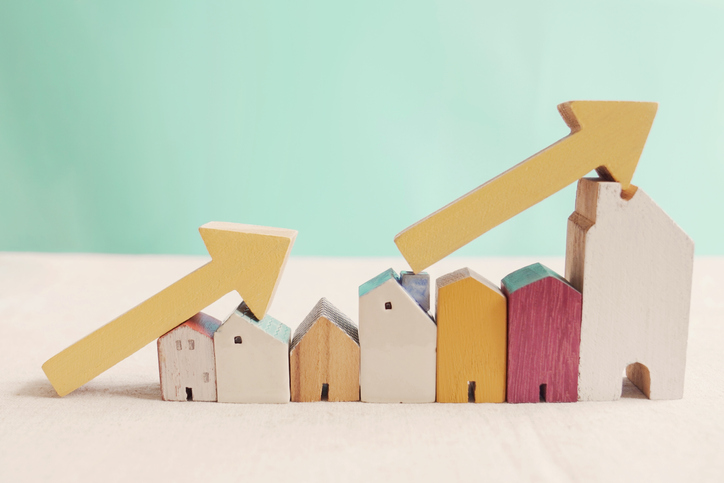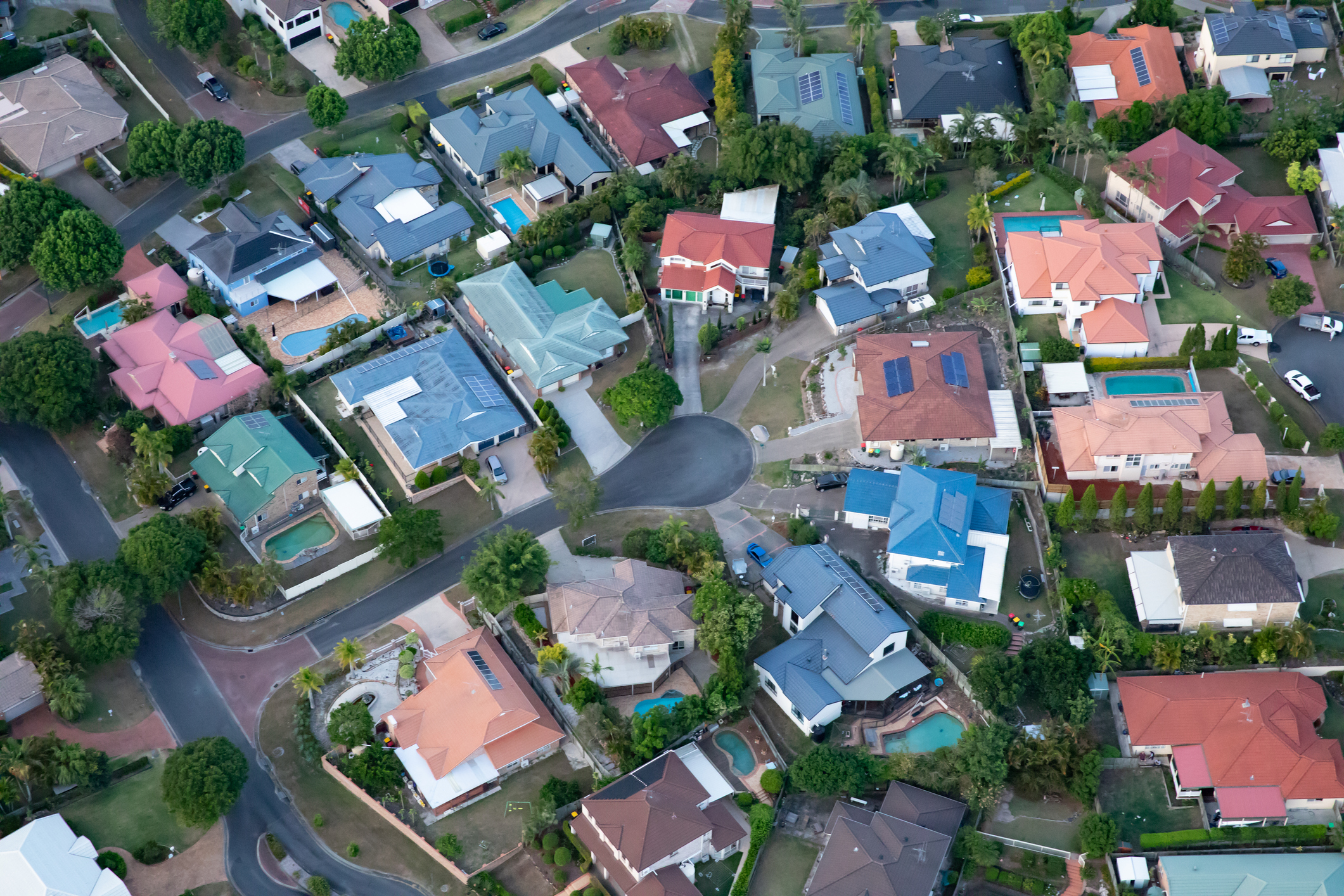Higher Interest Rates Not Just for Longer, but Maybe Forever
Rate projections suggest many Fed officials see a rising ‘neutral rate’
On Wednesday, Federal Reserve officials surprised markets by signalling interest rates won’t fall as much as previously planned.
The tweak might be more important than it looks. In their projections and commentary, some officials hint that rates might be higher not just for longer, but forever. In more technical terms, the so-called neutral rate, which keeps inflation and unemployment stable over time, has risen.
This matters to any investor, business or household whose plans depend on interest rates over a decade or longer. It could explain why long-term Treasury yields have risen sharply in the past few months, and why stocks are struggling.
The neutral rate isn’t literally forever, but that captures the general idea. In the long run neutral is a function of very slow moving forces: demographics, the global demand for capital, the level of government debt and investors’ assessments of inflation and growth risks.
The neutral rate can’t be observed, only inferred by how the economy responds to particular levels of interest rates. If current rates aren’t slowing demand or inflation, then neutral must be higher and monetary policy isn’t tight.
Indeed, on Wednesday, Fed Chair Jerome Powell allowed that one reason the economy and labor market remain resilient despite rates between 5.25% and 5.5% is that neutral has risen, though he added: “We don’t know that.”
Before the 2007-09 recession and financial crisis, economists thought the neutral rate was around 4% to 4.5%. After subtracting 2% inflation, the real neutral rate was 2% to 2.5%. In the subsequent decade, the Fed kept interest rates near zero, yet growth remained sluggish and inflation below 2%. Estimates of neutral began to drop. Fed officials’ median estimate of the longer-run fed-funds rate—their proxy for neutral—fell from 4% in 2013 to 2.5% in 2019, or 0.5% in real terms.
As of Wednesday, the median estimate was still 2.5%. But five of 18 Fed officials put it at 3% or higher, compared with just three officials in June and two last December.
In 2026, officials project the economy growing at its long-term rate of 1.8%, unemployment at its long-run natural level of 4%, and inflation at its 2% target. Those conditions would normally be consistent with interest rates at neutral. As it happens, officials think the fed-funds rate will end the year at 2.9%—another hint they think neutral has risen.
There are plenty of reasons for a higher neutral. After the global financial crisis, businesses, households and banks were paying down debt instead of borrowing, reducing demand for savings while holding down growth and inflation. As the crisis faded, so did the downward pressure on interest rates.
Another is government red ink: Federal debt held by the public now stands at 95% of gross domestic product, up from 80% at the start of 2020, and federal deficits are now 6% of GDP and projected to keep rising, from under 5% before the pandemic. To get investors to hold so much more debt probably requires paying them more. The Fed bought bonds after the financial crisis and again during the pandemic to push down long-term interest rates. It is now shedding those bondholdings.
Inflation should not, by itself, affect the real neutral rate. However, before the pandemic the Fed’s principal concern was that inflation would persist below 2%, a situation that makes it difficult to stimulate spending and can lead to deflation, and that is why it kept rates near zero from 2008 to 2015. In the future it will worry more that inflation persists above 2%, and err on the side of higher rates with little appetite for returning to zero.
Other factors are still pressing down on neutral, such as an aging world population, which reduces demand for homes and capital goods to equip workers.
So neutral has probably risen since 2019, but not to its pre-2008 level. Indeed, futures markets peg rates a decade from now at around 3.75%.
Of course, this is all just a forecast. If inflation comes down painlessly in the next year, if growth slows abruptly, or if Treasury yields drop, then estimates of neutral will also come down. For now, the evidence suggests the public should get used to higher rates as far as the eye can see.
 Copyright 2020, Dow Jones & Company, Inc. All Rights Reserved Worldwide. LEARN MORE
Copyright 2020, Dow Jones & Company, Inc. All Rights Reserved Worldwide. LEARN MORE
This stylish family home combines a classic palette and finishes with a flexible floorplan
Just 55 minutes from Sydney, make this your creative getaway located in the majestic Hawkesbury region.
Impact investing is becoming more mainstream as larger, institutional asset owners drive more money into the sector, according to the nonprofit Global Impact Investing Network in New York.
In the GIIN’s State of the Market 2024 report, published late last month, researchers found that assets allocated to impact-investing strategies by repeat survey responders grew by a compound annual growth rate (CAGR) of 14% over the last five years.
These 71 responders to both the 2019 and 2024 surveys saw their total impact assets under management grow to US$249 billion this year from US$129 billion five years ago.
Medium- and large-size investors were largely responsible for the strong impact returns: Medium-size investors posted a median CAGR of 11% a year over the five-year period, and large-size investors posted a median CAGR of 14% a year.
Interestingly, the CAGR of assets held by small investors dropped by a median of 14% a year.
“When we drill down behind the compound annual growth of the assets that are being allocated to impact investing, it’s largely those larger investors that are actually driving it,” says Dean Hand, the GIIN’s chief research officer.
Overall, the GIIN surveyed 305 investors with a combined US$490 billion under management from 39 countries. Nearly three-quarters of the responders were investment managers, while 10% were foundations, and 3% were family offices. Development finance institutions, institutional asset owners, and companies represented most of the rest.
The majority of impact strategies are executed through private-equity, but public debt and equity have been the fastest-growing asset classes over the past five years, the report said. Public debt is growing at a CAGR of 32%, and public equity is growing at a CAGR of 19%. That compares to a CAGR of 17% for private equity and 7% for private debt.
According to the GIIN, the rise in public impact assets is being driven by larger investors, likely institutions.
Private equity has traditionally served as an ideal way to execute impact strategies, as it allows investors to select vehicles specifically designed to create a positive social or environmental impact by, for example, providing loans to smallholder farmers in Africa or by supporting fledging renewable energy technologies.
Future Returns: Preqin expects managers to rely on family offices, private banks, and individual investors for growth in the next six years
But today, institutional investors are looking across their portfolios—encompassing both private and public assets—to achieve their impact goals.
“Institutional asset owners are saying, ‘In the interests of our ultimate beneficiaries, we probably need to start driving these strategies across our assets,’” Hand says. Instead of carving out a dedicated impact strategy, these investors are taking “a holistic portfolio approach.”
An institutional manager may want to address issues such as climate change, healthcare costs, and local economic growth so it can support a better quality of life for its beneficiaries.
To achieve these goals, the manager could invest across a range of private debt, private equity, and real estate.
But the public markets offer opportunities, too. Using public debt, a manager could, for example, invest in green bonds, regional bank bonds, or healthcare social bonds. In public equity, it could invest in green-power storage technologies, minority-focused real-estate trusts, and in pharmaceutical and medical-care company stocks with the aim of influencing them to lower the costs of care, according to an example the GIIN lays out in a separate report on institutional strategies.
Influencing companies to act in the best interests of society and the environment is increasingly being done through such shareholder advocacy, either directly through ownership in individual stocks or through fund vehicles.
“They’re trying to move their portfolio companies to actually solving some of the challenges that exist,” Hand says.
Although the rate of growth in public strategies for impact is brisk, among survey respondents investments in public debt totaled only 12% of assets and just 7% in public equity. Private equity, however, grabs 43% of these investors’ assets.
Within private equity, Hand also discerns more evidence of maturity in the impact sector. That’s because more impact-oriented asset owners invest in mature and growth-stage companies, which are favored by larger asset owners that have more substantial assets to put to work.
The GIIN State of the Market report also found that impact asset owners are largely happy with both the financial performance and impact results of their holdings.
About three-quarters of those surveyed were seeking risk-adjusted, market-rate returns, although foundations were an exception as 68% sought below-market returns, the report said. Overall, 86% reported their investments were performing in line or above their expectations—even when their targets were not met—and 90% said the same for their impact returns.
Private-equity posted the strongest results, returning 17% on average, although that was less than the 19% targeted return. By contrast, public equity returned 11%, above a 10% target.
The fact some asset classes over performed and others underperformed, shows that “normal economic forces are at play in the market,” Hand says.
Although investors are satisfied with their impact performance, they are still dealing with a fragmented approach for measuring it, the report said. “Despite this, over two-thirds of investors are incorporating impact criteria into their investment governance documents, signalling a significant shift toward formalising impact considerations in decision-making processes,” it said.
Also, more investors are getting third-party verification of their results, which strengthens their accountability in the market.
“The satisfaction with performance is nice to see,” Hand says. “But we do need to see more about what’s happening in terms of investors being able to actually track both the impact performance in real terms as well as the financial performance in real terms.”
This stylish family home combines a classic palette and finishes with a flexible floorplan
Just 55 minutes from Sydney, make this your creative getaway located in the majestic Hawkesbury region.






















